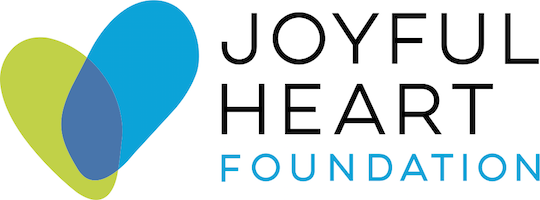You can leave this site quickly.
Learn more about Internet safety.
1in6 Thursday: Finding the Right Lens
Have you ever thought about creating a program for a population you're not sure how to reach? My first job right out of business school was as a violence-prevention educator. You may be wondering how business school prepared me for victim advocacy and prevention education. Well, it didn't. I wasn't taught evidence-based theory of how to prevent violence or respond to victims of sexual abuse.
What I did have was volunteer experience in peer counseling, various community-support initiatives and many years of for-profit management experience. I knew how to create a strategic plan and manage a team. In my new role as prevention coordinator, I was a team of one with a single "Rape Risk Reduction" (that's what they used to call prevention programs back in the day) powerpoint provided by the Florida Department of Health.
Essentially, I was up a creek with a desperate need of many, many paddles. Or in this case, presentations that would hold the attention span of 11-year olds as well as adults. (Side-note: adults are the most interesting population to teach, high-schoolers do the most eye rolling, and sixth graders say the darnedest things!)
Even if you’re not a new program coordinator, you might imagine that engaging and educating an entire community seems like a monumental task. Often, you are asked to do so much with little experience and almost no budget. Daunting? Absolutely! Impossible, nah.
The good news is we can use the tools we do have and take advantage of existing networks. I knew that I needed to read all the research I could get my hands on, and make use of the knowledge of dozens of other prevention educators funded by the state of Florida. Six years later, I ended up with countless presentations and more teaching requests than one can shake the proverbial stick at.
Fast forward to my work with 1in6 and the 1 in 6 Men On Campus National Task Force.
With a recent upswing in awareness and military and campus funding for male inclusive resources, more programs are asked to address the issues facing men that have experienced sexual abuse. If you've been trying to figure out how to engage male survivors, you may feel at a loss about your capacity to help. Or you may wonder why existing programs to help men in your community don’t get the level of response from the men whom statistics suggest might benefit.
You're not alone. A lot of my time is spent assisting others in their efforts to create awareness programs and develop services specific to men. Your hunch that you may need different language, messaging and branding isn't off point. Although there are many similarities in the way men and women respond to histories of abuse, socialization plays a large role in our expectation of ourselves and those charged with the task to help us heal.
I learned early on that I needed to look through the lens of the student or audience in preparing my classes. How will they experience me, and then secondly the content? Most importantly, what are my expectations of my audience? Am I aware of their culture, needs, and challenges? We have a lot to discuss when it comes to reaching out to male identified survivors of sexual abuse. We also have a lot to learn. Luckily, we some data and an emerging population of socially justice minded generations who place equal value on the experience of all survivors. Jim Hopper, David Lisak, Lara Stemple and Ilan Meyer, and others provide us with valuable research on this subject. Consider reviewing their studies and apply it to your work with men.
When it comes to outreach and engagement, I urge you to reach out to your community of professionals in this field. Work with them to establish programming using the same trauma-informed principles and compassion for all survivors, wherever they are on the cycle of abuse. Men are waiting for a safe space, together we can provide it.
 - By Martha Marin, Managing Director for 1in6
- By Martha Marin, Managing Director for 1in6
Martha is a Colombian native raised in L.A. and South Florida where she received a B.A. in Business Management from the University of North FL. She brings us a unique set of skills acquired from many years of for-profit management and a deep dedication to human rights. As a Program Coordinator for the Women’s Center of Jacksonville and FL Dept. of Health, she taught thousands of students on topics related to the prevention of sexual assault including cyber bullying, LGBTQ/sexual harassment and teen dating violence, as well as human trafficking. Martha is a public speaker, consultant and professional trainer.
Most recently she served as the Chair of the Northeast Florida Human Trafficking Coalition. Her international projects include a large-scale bi-lingual internship for the USAID Scholarships for Education and Economic Development at FL State College at Jacksonville.
The mission of 1in6 is to help men who have had unwanted or abusive sexual experiences in childhood live healthier, happier lives.
1in6′s mission also includes serving family members, friends and partners by providing information and support resources on the web and in the community.
Joyful Heart and 1in6 invite you to visit 1in6.org for info, options and hope, and to learn more about our partnership and Engaging Men initiative here.
The views expressed above are not necessarily those of the Joyful Heart Foundation or 1in6.




Your Voices